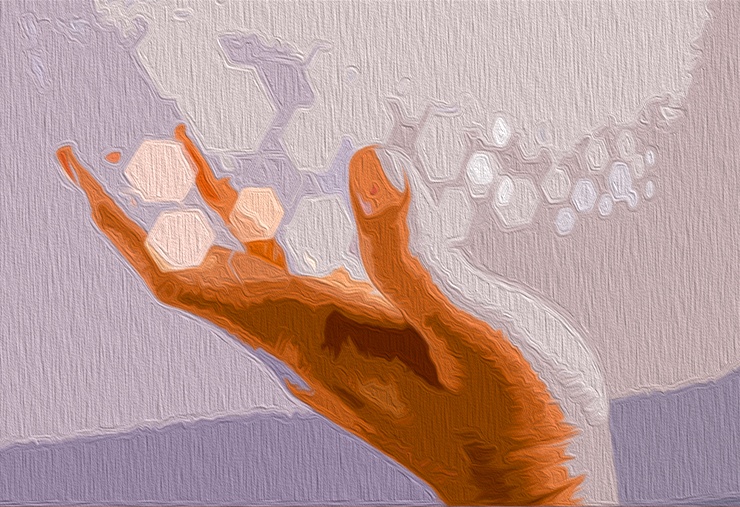Google's Bard is the search giant's answer for OpenAI's ChatGPT or Microsoft's Bing Chat. Bard is not able to look up search results like Bing Chat. Instead, it generates all the information. It is still intended to assist users in brainstorming and answering queries. Google hopes Bard will become an integral part the Google Search experience.
Yesterday, Bard gave me a live demo in London and suggested ideas for a bunny-themed party for children. He also gave many tips on caring for houseplants. Jack Krawczyk (a senior product director at Google) said, "We really see them as this creative collaborator."
This launch is huge for Google. Microsoft partnered up with OpenAI in order to aggressively compete for the top spot in Google search. Google made a huge mistake when it tried to reply. The chatbot made a mistake in a teaser video for Bard, which the company released in February. Google's market value dropped by $100 billion overnight.
Google won't reveal much about Bard's operation, as large language models, which are the technology behind this wave chatbots, are valuable IP. It will however say that Bard was built on top of LaMDA (Google's flagship large-language model). Google promises that it will keep updating Bard as the technology improves. Bard, like ChatGPT or GPT-4 is fine-tuned with reinforcement learning from human feedback. This technique trains a large language model so it can give more useful and less toxic answers.
Google has been working behind closed doors on Bard for some time, but it is still an experiment. The chatbot is now free for people who sign up to the waitlist in the US or UK. These users will be able to test the technology and make improvements. Zoubin Ghahramani, Google's vice president of research, said that they will get user feedback and then build it over time. "We are aware of the many things that could go wrong when large-language models are used."
Margaret Mitchell, chief ethics officer at AI startup Hugging Face, and former co-lead for Google's AI ethics group, is skeptical about this framing. She says that Google has been involved in LaMDA since years and that pitching Bard to be an experiment is a PR trick larger companies use to reach millions more customers, while also taking away their accountability for any problems.
Google wants users to see Bard as an extension of Google Search and not a replacement. It is a button located below Bard’s chat widget that says "Google It." This button is intended to encourage users to visit Google Search to find more information or check Bard’s answers. Krawczyk says that it is one of the many things that helps us overcome limitations in the technology.
Ghahramani says, "We want people to explore other places and confirm things if necessary."
Bard's flaws have been acknowledged and have influenced the chatbot's design in many other ways. Bard can only be contacted a few times per session. Bard can only be contacted once per session. This is because large language models are more likely to engage in multiple conversations. People have shared some of the most bizarre responses to Bing Chat online after long exchanges.
Google will not confirm the conversation limit for launch. However, it will be very low initially and will be adjusted based on feedback from users.
Google is also being cautious with its content. Google will not allow users to request sexually explicit, illegal or harmful material or personal information. Bard did not offer me any tips to make a Molotov cocktail in my demo. This is standard for the next generation of chatbots. It would not give any medical information such as how to spot cancer signs. "Bard isn't a doctor. Krawczyk says that it is not going to provide medical advice.
The most significant difference between ChatGPT and Bard is the fact that Bard generates three versions of each response. Google calls these "drafts." Users have the option to click between them, pick the one they like, or mix and match them. This is done to remind users that Bard can't generate perfect answers. Krawczyk says, "There's a sense of authoritativeness when only one example is available." "And we all know that factuality has limitations."
Krawczyk asked Bard for an invitation to his child’s birthday party. Bard completed this task by filling in Gym World's San Rafael street address. He said, "It's somewhere I drive by a lot but I honestly can’t tell you where the street is." "So that's Google Search." Krawczyk clicked on "Google It" in order to verify the address. (It was.)
Krawczyk claims that Google doesn't want to replace Search at the moment. He says that the experience was developed over many decades. This may not be a long-term strategy, but a sign of Bard’s current limitations. Google announced that it will also integrate LLMs into Search more deeply. More details to follow.
This may happen sooner than expected, given that Google is in an arms race against OpenAI, Microsoft and other competitors. Chirag Shah, a University of Washington researcher on search technologies, says that "they are going to continue rushing into this regardless of the readiness of tech." Google will certainly follow the lead of Microsoft and ChatGPT integrations into Bing.
Shah and Emily Bender, a University of Washington linguist, co-authored a paper a year ago in which they discussed the difficulties associated with large language models being used as search engines. The idea was still hypothetical at the time. Shah said he was concerned that they might have gone too far.
This experimental technology was incorporated into consumer-facing products at an incredible speed. He says, "We didn’t expect these things to happen so quickly." They have no other choice. They must defend their territory.
————————————————————————————————————————————————————————————
By: Will Douglas Heaven
Title: Google just launched Bard, its answer to ChatGPT—and it wants you to make it better
Sourced From: www.technologyreview.com/2023/03/21/1070111/google-bard-chatgpt-openai-microsoft-bing-search/
Published Date: Tue, 21 Mar 2023 14:00:26 +0000

Leave a Reply